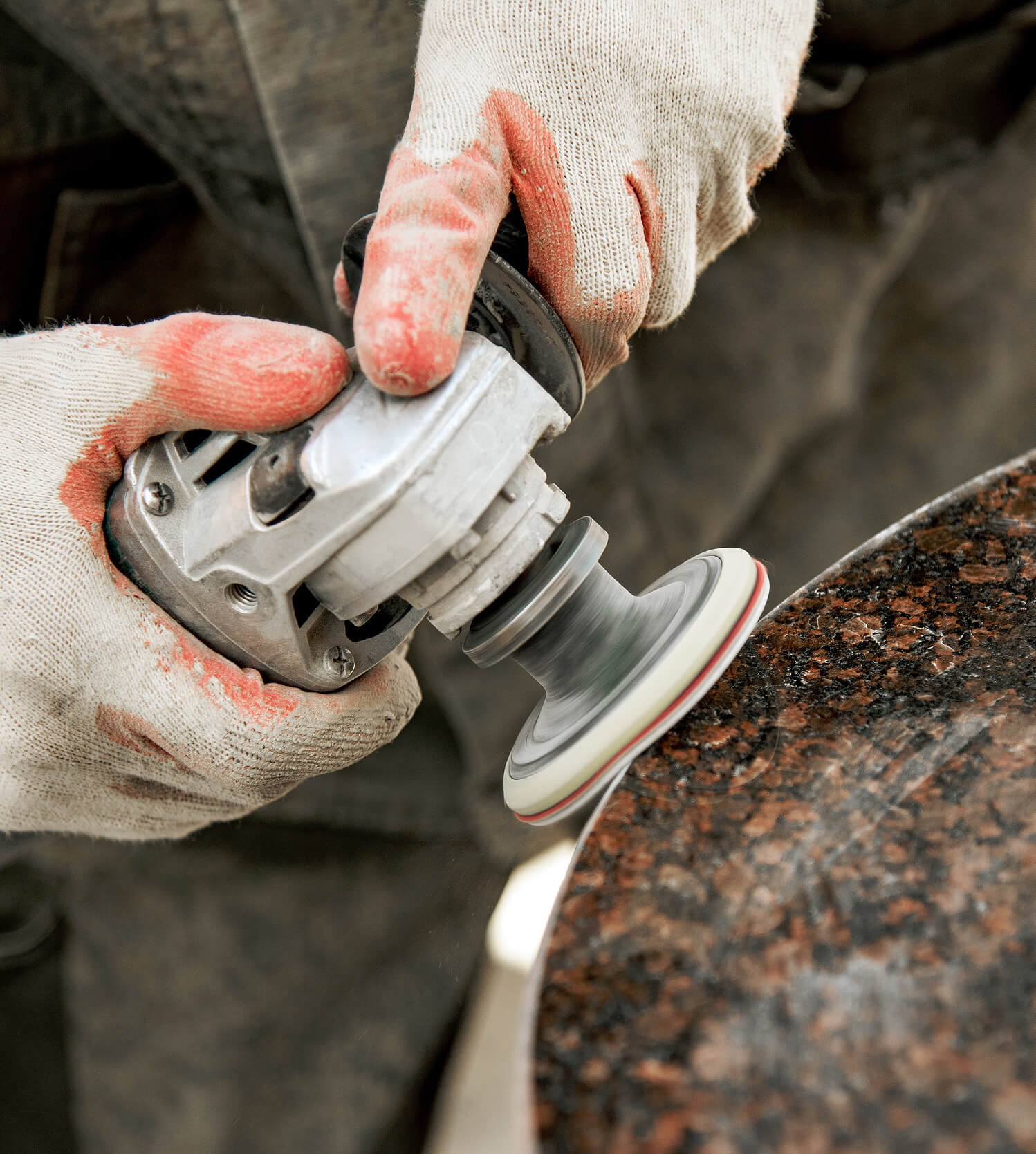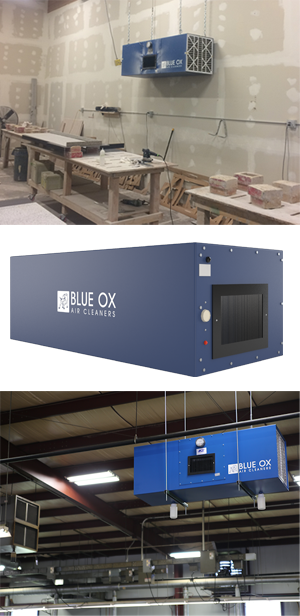
Silica Dust Control: Ensure Workplace Safety & Compliance
Why is silica a concern for workers in stone countertop manufacturing, finishing and installation industries?
Those who work in manufacturing, finishing or installing natural or manufactured stone countertops are at risk of crystalline silica exposure. Crystalline silica is found in various rocks like granite, sandstone, quartzite, and even sand.
Finished natural and manufactured stone products do not present health hazards themselves but when used in cutting, grinding, sanding, drilling and polishing these manufactured stone products can release hazardous levels of silica particles into the breathing zones of workers.
Workers in many other indoor industries also face silica hazards, including:
• Masonry and Tile Work: Cutting, grinding, and finishing of concrete, brick, mortar, and ceramic tiles. Mixing and handling of dry mortar, grout, and other cementitious materials.
• Foundries and Metalworking: Sand casting and molding processes. Abrasive blasting and finishing of metal parts. Handling and processing of silica-containing refractory materials.
• Glass Manufacturing: Crushing, mixing, and handling of raw materials containing silica. Cutting, grinding, and polishing of finished glass products.
• Ceramics and Pottery Production: Mixing, sieving, and handling of dry clay and glaze powders. Trimming, sanding, and finishing of ceramic products.
• Construction and Demolition Sites: Cutting, grinding, and drilling of concrete, masonry, and drywall materials. Sweeping and cleanup of silica-containing dust and debris.
• Landscaping and Hardscaping: Cutting, grinding, and polishing of natural stone pavers, tiles, and other products. Handling and mixing of silica-containing aggregates and cements.
Finished natural and manufactured stone products do not present health hazards themselves but when used in cutting, grinding, sanding, drilling, and polishing these materials can release hazardous levels of silica particles into the breathing zones of workers.
When tiny silica particles are inhaled it puts workers at risk of silicosis, an incurable, disabling, and sometimes fatal lung disease.
After inhalation, silica dust particles become trapped in the lung tissue resulting in scarring, and inflammation, and reducing the lungs' ability to take in oxygen. Those who are exposed to crystalline silica have an increased risk of lung cancer, chronic obstructive pulmonary disease (COPD), and kidney disease.
Those who operate powered hand tools like grinders, saws, and high-speed polishers have some of the highest silica exposures in the countertop manufacturing, finishing, and installation industries.
This type of silica dust exposure comes from dry cutting, grinding, edging, and contouring stone in workshop environments or on job sites where finishing work is completed.
In the manufactured stone product industry, workers are also at risk of silica dust exposure when moving or mixing bulk raw materials, opening bags of ground quartz, cleaning dust collector baghouses, and cleaning and scraping mixers.
What can be done to protect workers from exposure to silica dust?
Employers must determine which jobs and activities expose workers to silica dust and take the appropriate actions to control overexposures. A combination of engineering controls, work practices, training, and installing protective equipment such as air filtration systems is required to protect workers from overexposure to silica.
Blue Ox Air Cleaners reduce 95% of particulate by drawing contaminated air through a series of high-efficiency filters. Our air filtration systems exchange the air in a room 8x per hour until it's clean and are made available in various sizes and filter combinations to meet the demands of almost any application.
Blue Ox Silica Dust Case Study
Granite Transformations tried several attempts to filter the air and reduce the odors in their manufacturing facility but had little success.
We provided them with an OX3000 air filtration system which was installed above the shop's main work area. The air quality has become noticeably better and the epoxy odors have also been greatly reduced!
As an added benefit, the workers also commented that the air circulation helps keep them cool on hot days.
Note: If air samples from your workplace show levels above OSHA’s Permissible Exposure Limit (PEL), employers are required to take action to reduce worker exposures to below the PEL.
• The OSHA general industry PEL for quartz, the most common form of crystalline silica, is an 8-hour time-weighted average exposure to respirable dust. For pure quartz silica, the PEL is approximately equal to 100 μg/m3 of air.
• NIOSH recommends that employers control exposure to respirable crystalline silica so that no worker is exposed to a time-weighted average concentration of silica greater than 50 μg/m3 of air, as determined by a full-shift sample for up to a 10-hour workday of a 40-hour workweek.
Reference: OSHA: Worker Exposure to Silica during Countertop Manufacturing, Finishing and Installation

Even with engineering controls and proper work practices in place, airborne silica levels can still remain a concern in some workplace environments. This is where high-quality air filtration systems can play a vital role.
Blue Ox offers a range of modular and portable air filtration units designed for capturing respirable crystalline silica dust as well as other particulates generated during manufacturing, construction, and finishing operations.
Companies like Granite Transformations have successfully deployed Blue Ox air filtration to improve indoor air quality and provide secondary control against hazardous silica exposures for their workers.
By implementing a comprehensive silica exposure control plan utilizing wet methods, enclosed processes, PPE, and supplemental air filtration from Blue Ox, employers can ensure they meet OSHA requirements and maintain a safe, breathable workspace environment.

Copyright © 2025 | Blue Ox Air Cleaners. A division of Air Cleaning Specialists, Inc.
